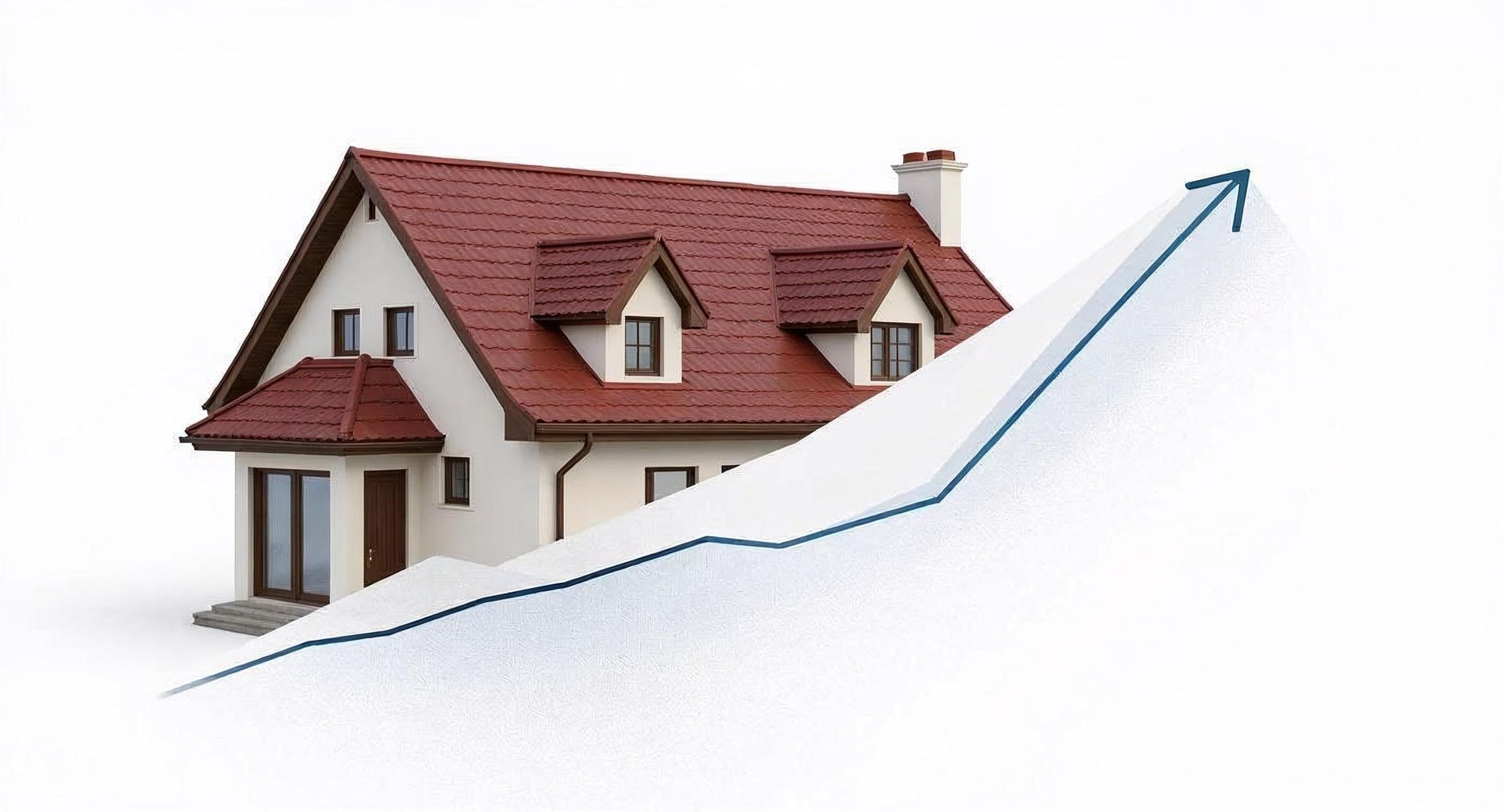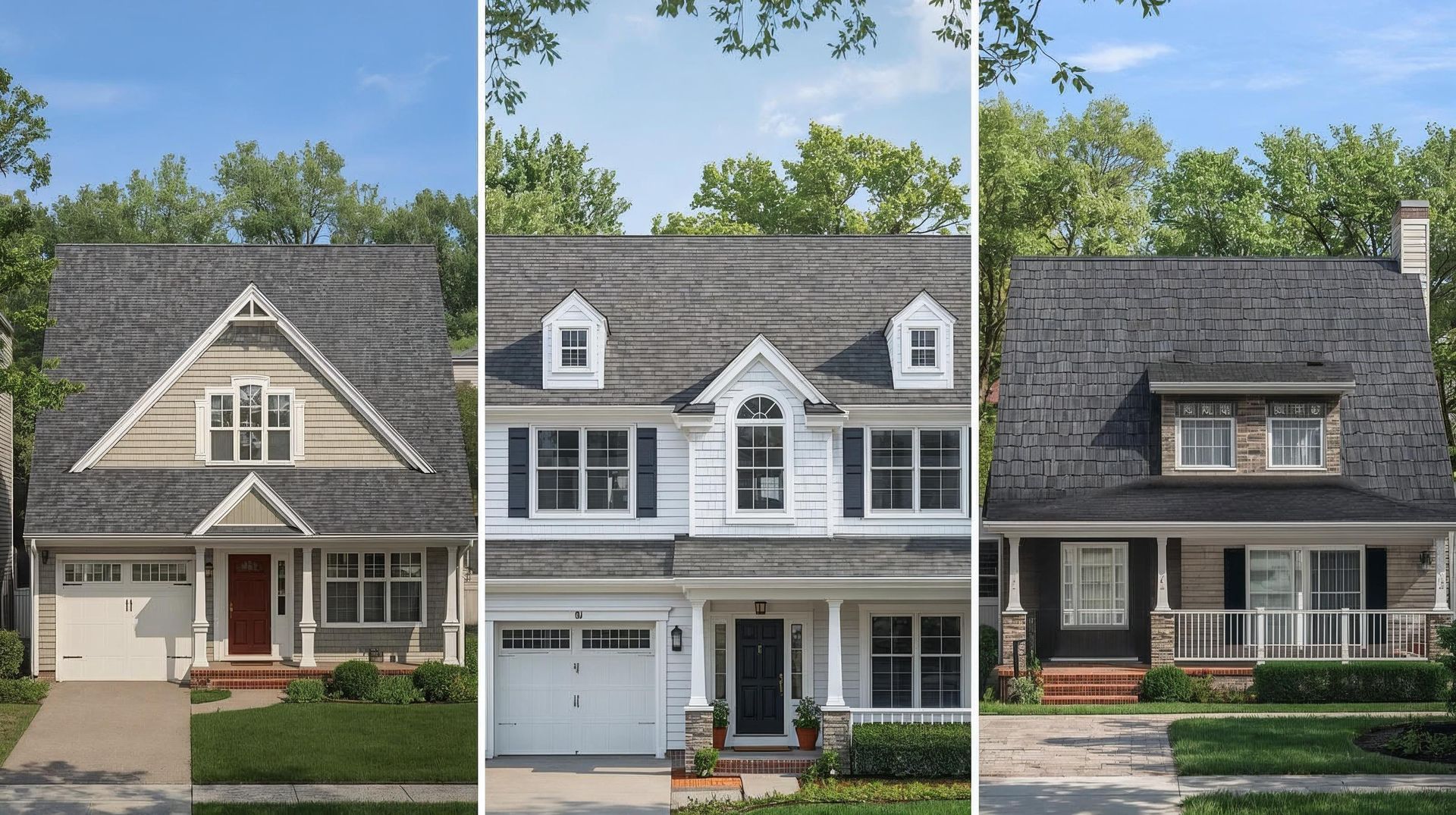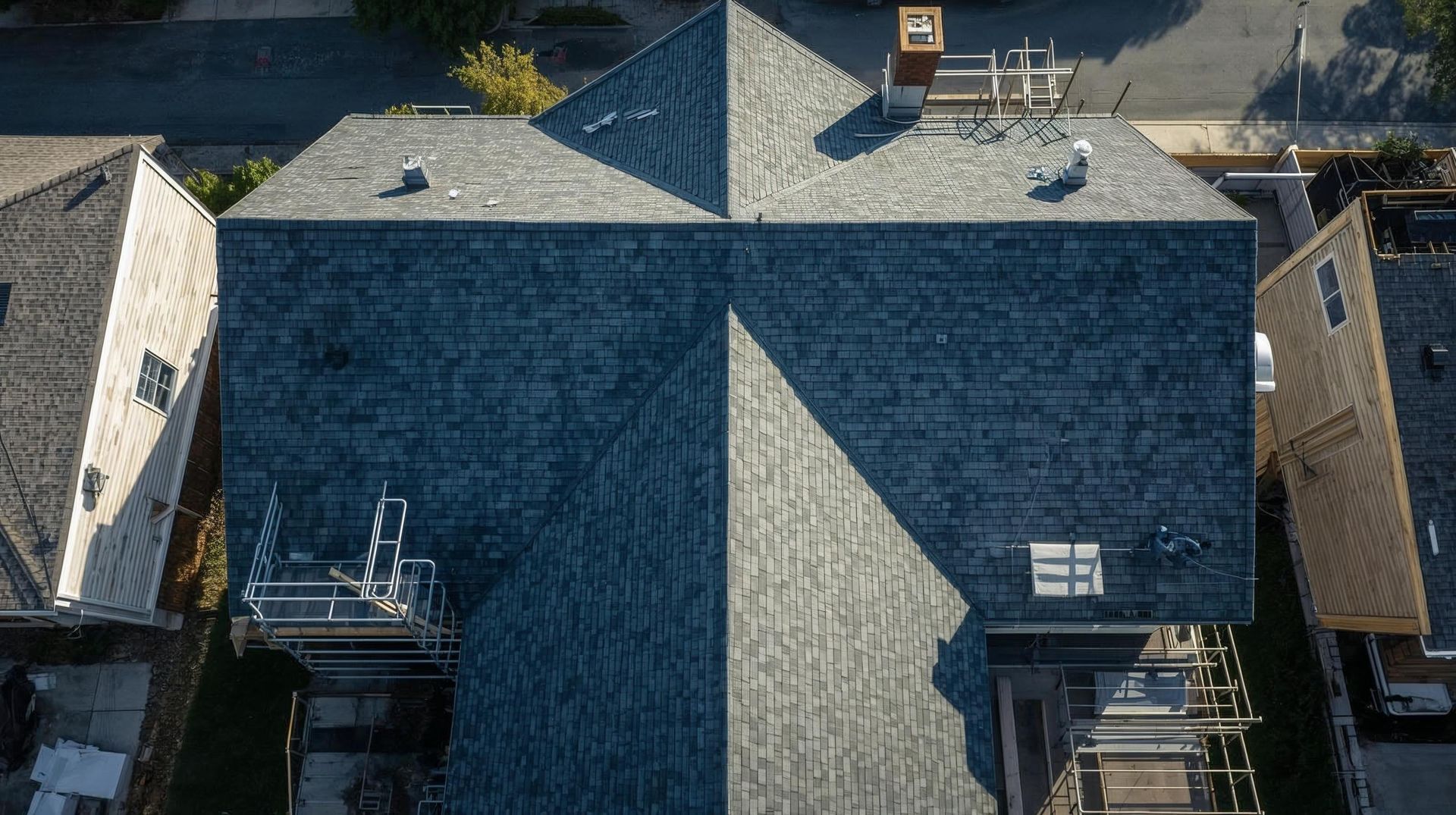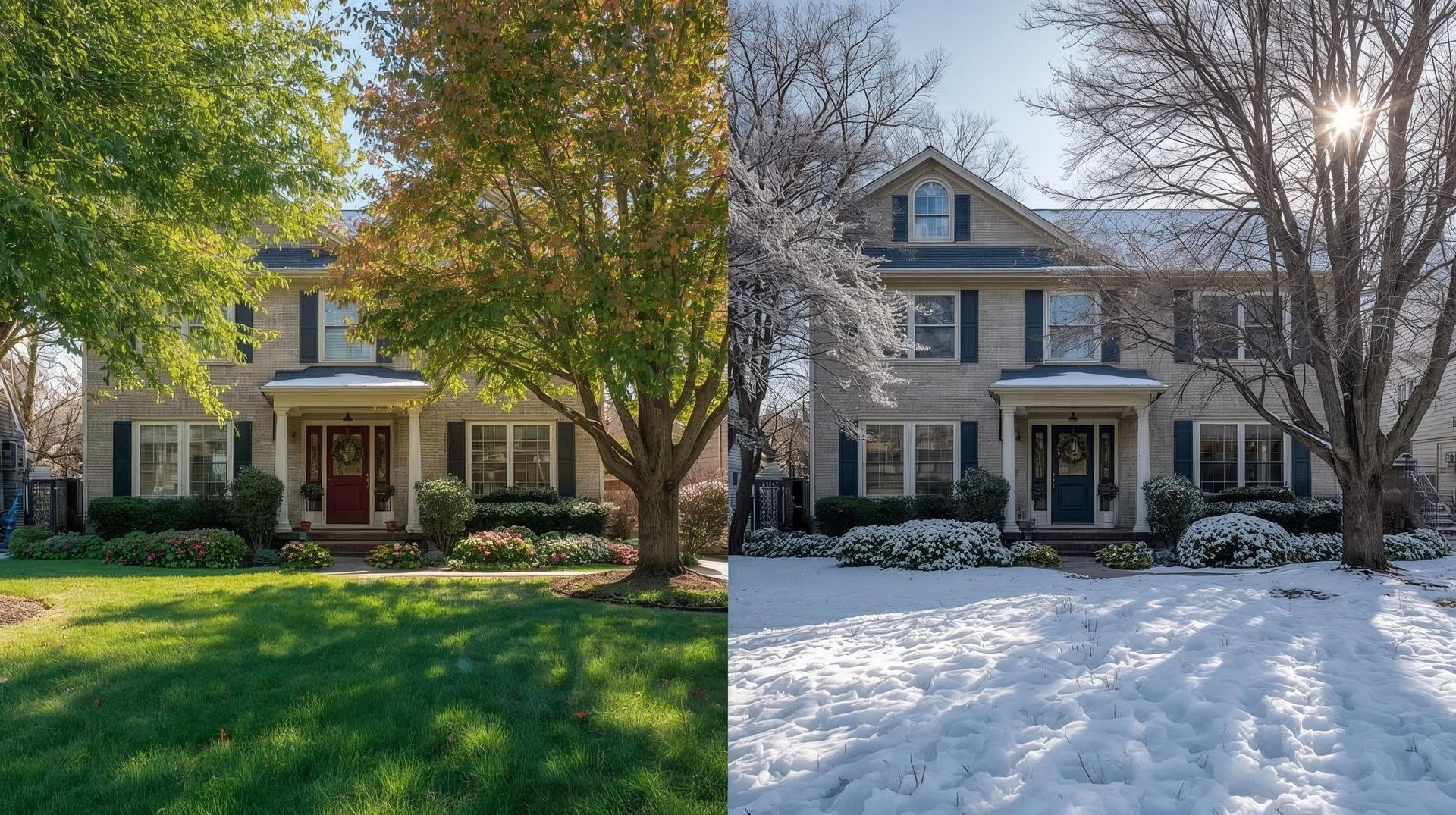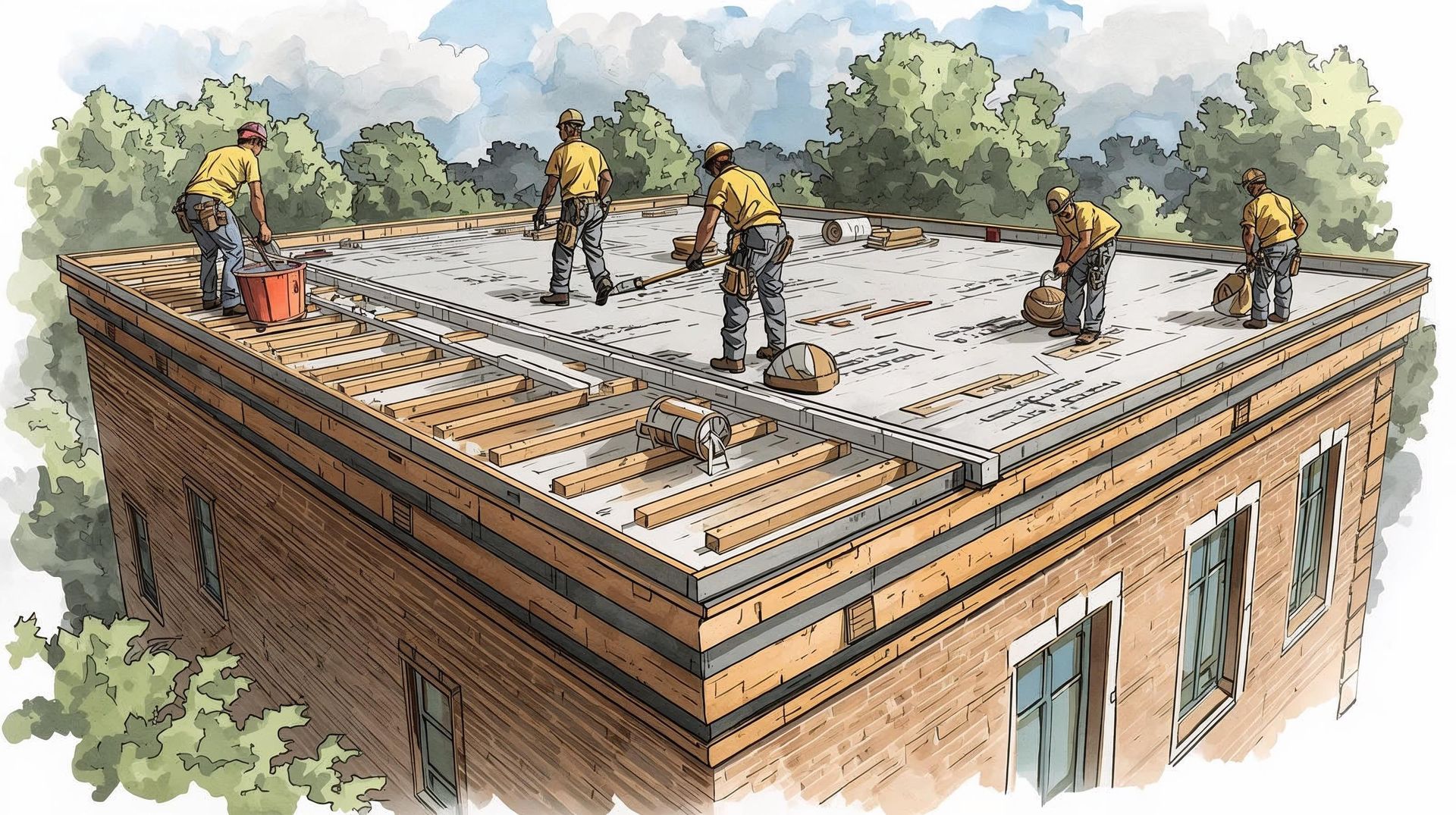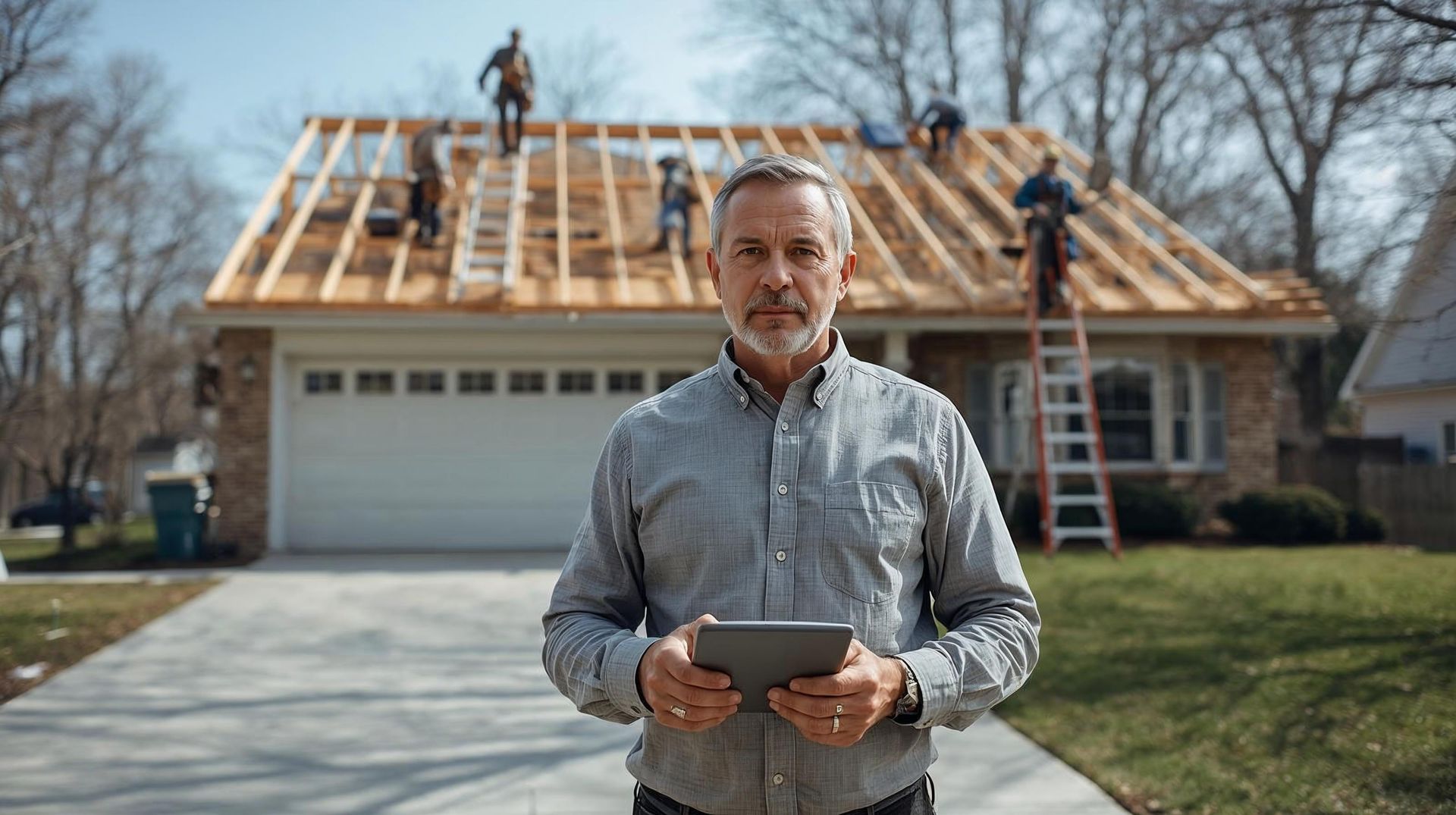How Long Does a Roof Last? Lifespan by Material and Climate
- Roof lifespans vary widely by material: Asphalt lasts 20-30 years, while slate can last 100+ years.
- Climate plays a huge role: Sun, wind, rain, and snow all impact longevity.
- Proper installation and maintenance can extend your roof's life.
- Some signs of aging include leaks, missing shingles, or sagging areas.
- Replacement timing depends on both age and condition.
- Use our roof calculator to estimate costs for repair or replacement.
When Should You Plan for a Roof Replacement?
It's easy to overlook the roof above your head until a leak reminds you it won't last forever. What most homeowners don't realize is that every roof has a lifespan, shaped by the materials it's made of, the weather it battles, and the care it receives.
Let's explore how long different roofing materials last, how climate changes the rules, and when it's time to replace your roof.
What's The Average Lifespan of a Roof
Every roof material has its own clock. The lifespan of your roof depends on the roofing materials, climate conditions, and whether the roof was installed correctly and cared for with regular maintenance.
Here's a quick breakdown of how long common roofing options last:
1. Asphalt Shingles (15-30 years)
- Three-tab asphalt shingles: 15-20 years (basic option, thinner, more prone to damage).
- Architectural asphalt shingles: 25-30 years (thicker, layered look, better durability).
- Factors that shorten lifespan: UV rays, storm damage, loose shingles, and shingle granules washing off.
- With standard maintenance (cleaning gutters, checking for damaged shingles), asphalt roofs can reach their upper lifespan.
2. Wood Shingles & Cedar Shingles (20-40 years)
- Wood shingles and cedar shingles offer natural beauty but are vulnerable to moisture buildup, mold growth, and insects.
- With proper maintenance (sealing, cleaning, trimming tree branches), they can last 30-40 years.
- In humid climates, lifespan may shrink closer to 20 years.
3. Metal Roofs (40-70 years)
- Standing seam metal roofs and metal shingles are highly resistant to extreme weather conditions.
- Lifespan varies depending on thickness and professional installation quality.
- Low maintenance, but may dent from falling debris or heavy hail.
- In coastal areas, salt air can reduce longevity unless coated with protective finishes.
4. Clay Tile Roofs (50-100 years)
- Clay tile roofs are known for their long-lasting roofing material qualities.
- Extremely durable against sunlight, snow, and storm damage.
- Heavy weight means the roof structure and roof deck must be strong enough.
- Cracks from improper installation or walking on tiles can reduce the life of the tiles.
5. Slate Roofs (75-150 years)
- Slate tile roofs are among the most durable materials available.
- It can last well over a century with professional installation and maintenance.
- Resistant to fire, water infiltration, and severe weather conditions.
- High upfront cost, but unmatched roof's longevity, is often considered a long-term investment.
6. Flat Roofs (10-25 years)
- Common in commercial buildings and some modern homes.
- Materials used include rubber (EPDM), PVC, and modified bitumen.
- Prone to water pooling, clogged gutters, and mold growth if not well-maintained.
- With routine maintenance, the lifespan can reach the higher end of 25 years.
Quick Reference: Average Roof Lifespan by Material
| Roof Material | Average Lifespan | Notes |
|---|---|---|
| Three-tab asphalt shingles | 15-20 years | Affordable, more repairs needed |
| Architectural asphalt shingles | 25-30 years | Thicker, better durability |
| Wood shingles / Cedar shingles | 20-40 years | Needs regular care against rot |
| Metal roofs | 40-70 years | Durable, weather-resistant |
| Clay tile roofs | 50-100 years | Heavy, needs a strong structure |
| slate roofs | 75-150+ years | Premium, longest-lasting |
| Flat roofs | 10-25 years | Common for commercial buildings |
Bottom line: The life of your roof depends not only on the type of roof but also on regional climate conditions, how it was installed, and how much routine maintenance you give it.
Want to know about Roofing Financing Options for 2025? Check our blog: Roof Financing Options for 2025: A Guide to Loans, Insurance & Tax Credits
How Climate Affects Roof Lifespan
A roof may be built to last decades, but the climate it lives under can speed up or slow down the countdown.
Here’s how different climate factors play a role:
1. Hot & Sunny Areas
- Constant exposure to UV dries out roofing materials, especially asphalt shingles, causing them to crack, curl, and lose protective granules.
- Homes in sunny states like Arizona or Nevada often see their roof’s lifespan reduced by several years compared to the same roof in a milder climate.
- Metal roofs and tile roofs handle UV exposure better, reflecting heat and resisting sun damage.
2. Rain & Moisture
- Frequent rainfall accelerates dirt, rot, and moisture under shingles.
- Wood shingles are especially vulnerable, while slate roofs and clay tile roofs are naturally water-resistant.
- Poor roof installation and blocked gutters can worsen the damage, creating leaks and weakening the housetop.
3. Snow & Ice
- Heavy snow loads put significant weight on your roof structure, especially flat or low-sloped roofs.
- Freeze-thaw cycles cause water to seep into cracks and expand when frozen, leading to roof leaks and structural damage.
- Metal roofs often perform best in snowy regions since snow and ice slide off more easily.
4. Wind & Storms
- High winds can lift and tear shingles, leaving gaps that expose your housetop to the elements.
- Hail damage causes dents, cracks, or broken tiles that shorten your roof’s lifespan.
- Regions with frequent hurricanes or tornadoes see much higher rates of roof repairs and replacements.
5. Temperature Fluctuations
- Areas with extreme hot-and-cold swings put stress on roofing materials, leading to faster deterioration.
- Asphalt shingles expand in the heat and contract in the cold, which can cause cracking and premature wear.
- Slate and metal roofs handle these fluctuations better due to their durability.
6. Humidity & Coastal Conditions
- Coastal climates expose roofs to salt air corrosion, which eats away at metal fasteners and panels.
- High humidity levels encourage moss, algae, and mold development, especially on shaded roofs.
- Special coatings and routine roof maintenance are essential in these regions to preserve the lifespan.
While average roof lifespans give you a general idea, your local climate conditions will ultimately decide whether your roof lasts its full potential or needs to be replaced years earlier. Regular roof inspections, proper maintenance, and choosing the right roofing materials for your climate can make all the difference.
What are the Signs Your Roof is Nearing the End of Its Life?
Even the best roof types eventually wear down. Here are the warning signs that it may be time to replace your roof:
- Missing Shingles or loose shingles scattered across the yard.
- Damaged shingles with curling edges or cracks.
- Roof leaks or water stains inside the house.
- Shingle granules are building up in gutters.
- Sagging roof structure or weakened roof deck.
- Mold growth or moisture buildup in the attic.
- Frequent repairs and rising maintenance costs.
When these issues pile up, a roof repair may not be enough. At that point, investing in a new roof is the smarter move.
How to extend the Life of your Roof
Most homeowners want to maximize the life of their roof. Here are a few ways to stretch your roof's life expectancy:
- Schedule inspections with a professional roofer at least once a year.
- Keep gutters clear to prevent clogged gutters and water damage.
- Trim tree branches to avoid punctures or wear on shingles.
- Address storm damage and roof leaks quickly.
- Maintain a consistent temperature in the attic with proper ventilation.
- Invest in professional installation and use high-quality materials from the start.
A roof warranty can also provide peace of mind, covering certain types of defects or premature wear if the roof was installed correctly.
Cost vs. Longevity: What to Consider
The average lifespan of a roof is only one piece of the puzzle. Roof replacement is a big investment, but choosing durable materials and ensuring proper installation often pays off in the long run.
For instance:
- A shingle roof may be cheaper upfront, but it may need replacing twice in the time it takes a metal roof or slate roof to wear out.
- Commercial buildings often opt for flat roofs due to lower cost, even if the roof's longevity is shorter.
- A roof warranty can offset costs if poor installation or defective materials cause problems.
Most homeowners balance budget, aesthetic preferences, and average life expectancy when deciding which roof type makes the most sense.
Interactive Roof Calculator
How it works:
- Enter your roof material, current age of roof, climate zone, and any existing issues (like leaks, missing shingles, or moss).
- The calculator estimates whether repair costs or replacement costs make more financial sense, based on the roof's expected lifespan.
- This helps homeowners plan for long-term investment, set a realistic budget, and avoid surprise expenses.
Example scenario:
- Roof material: Asphalt shingles
- Climate: Hot and sunny (Arizona, Naveda, Texas)
- Roof age: 18 years
- Issues: Curling shingles, minor leaks
- Repair Estimate: $600-$1,200 (patching leaks, replacing shingle roof)
- Replacement Estimate: $7,500-$10,000 (new Asphalt shingle roof)
In this case, repairs might buy you 2-4 more years, but replacement ensures 25-30 years of worry-free protection.
Want to know the cheapest way to replace a roof? Check this out!
Final thoughts
So, how long does a roof last? The truth is, a roof's life expectancy depends on its roofing materials, the local climate conditions, and how much care it receives. An Asphalt roof might last 20 years, while slate tile roofs or clay tile roofs could easily protect your home for 100 years or more.
For most homeowners, the key is balancing cost, durability, and style while making sure the roof installation is handled by a trusted professional roofer. With proper maintenance, your roof's longevity will far exceed the average roof, keeping your family safe and your home protected for decades to come.
Find out how long your roof will last and plan for the future. Start with our roof calculator today.
Which roofing material lasts the longest?
Slate roofs take the crown, lasting 75-150 years or more. Clay tile roofs are also long-lasting, often 50-100 years.
Does climate change reduce roof lifespan significantly?
Yes, a roof in a harsh climate can lose 5-10 years of its lifespan compared to the same roof in a milder region.
How often should I inspect my roof?
At least twice a year (spring and fall), and always after major storms. Regular roof inspections help catch small issues before they become expensive problems.
Can repairs extend a roof beyond its expected lifespan?
Yes, but only to a point. Proper roof repairs and maintenance can stretch a roof's lifespan by several years, but eventually replacement becomes more cost-effective.
How do I know if my roof needs replacement before the end of its average lifespan?
Watch for warning signs: frequent leaks, sagging roof deck, excessive granule loss, cracked or curling shingles, or rising energy bills. Even if your roof hasn't reached its "average age", these issues may signal it's time for a new roof.

